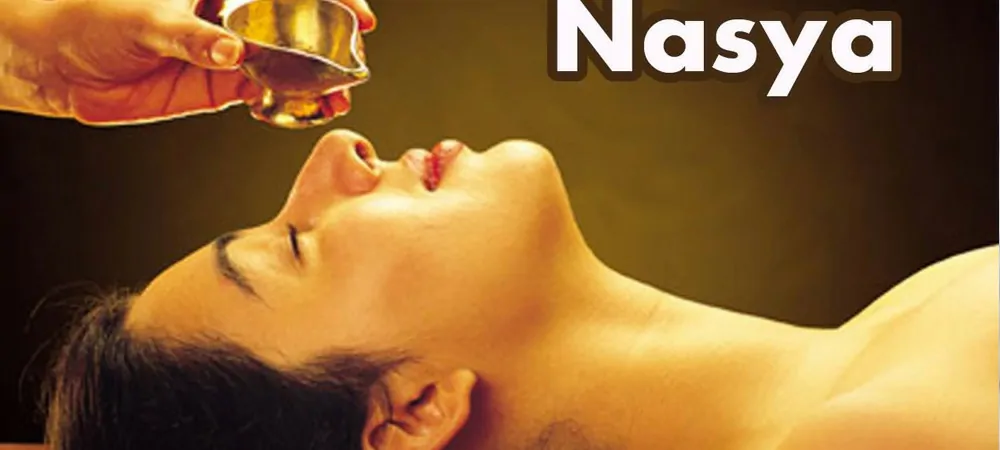Nasya treatment refers to an Ayurvedic therapy that includes instillation of herbal oils, juices or powders through the nasal route. It works specifically on disorders of ear, nose and throat. Nasya is one among the five Panchakarma therapies. It is especially desirable for diseases of parts above the base of the neck; nasal passage being the gateway of the head.
Benefits of Nasya Karma
- Stress Reduction : It includes administration of medicated drugs or oils through nostrils. It stimulates the vital centers of brain that regulate emotions.
- De-Toxification : Nasyam is one of the panchakarmas and is indicated as an important Ayurvedic de-toxification therapy.
- Skin & Hair Care : With regular treatment, Nasyam can improve skin complexion. It can also improve hair texture and prevent greying of hair.
- Paralysis : As mentioned in Ayurveda nose is the opening to reach the brain, any medicine instilled in nasal cavity acts directly on brain.
- Elderly Care : Ayurvedic Nasyam treatment can be used in disorders that develop with increasing age such as pain, paralysis, stress etc.
- Immunity : Use of Immunity boosting herbs for Nasyam can be beneficial in people who show low Immunity.
- Eye Care : Medications administered through nasal cavity act on the specific area of brain that are involved in regulating vision.
- Mental Health : Medication administered through nasal cavity act on the specific area of brain to improve mood and emotions.
Types of Nasya Therapy
As per function, there are 3 different types of Nasya Brihmana Nasya, Virechana Nasya, and Shamana Nasya. As per quality, Nasya can be divided into 2 categories i.e. Pratimarsha Nasya and Marsha Nasya. Some other popular nasal therapy treatment includes the following:
- Navana : When Nasya is meant for Shodhana or Snehana, it is termed as Navana. This is the most common type of Navana and is used for hair fall, headaches and bells palsy tinnitus.
- Pradhamana : This is a procedure where dry powders get blown into the nostrils through a narrow pipe. It can also be inhaled. Diseases such as epilepsy, sudden unconsciousness, and any other diseases related to the brain are treated through this method. Some other herbs that are used along with this method of treatment include Vacha, vidanga, maricha etc.
- Avapeedana : In this form of Nasys, juice extracts are injected into the nostrils. 4-6 drops of juice for each nostril are required. This treatment is ideal for patients suffering from poisoning, epilepsy, delirium, rhinitis, etc.
- Dhooma : This form of Nasya has 3 subtypes- virechanik, prayogik and snehaik. In Dhooma, a patient is made to inhale medicated fume from both the mouth and nostrils for 3-4 times. The exhalation should only happen from the mouth.
The procedure of Nasya can be classified under three headings
- Poorvakarma or pre purificatory measures : Includes facial oil massage or application of steam to face, forehead, head, ears and neck. This helps to loosen the adhesive Doshas.
- Pradhanakarma or main procedure of Nasya : This is the main step of Nasya and includes instillation of luke warm medication in both the nostrils, alternately, with the help of proper instrument like dropper. The sole, shoulder, neck, ear and palm are gently massaged after the administration of the drug
- Paschatkarma or post therapeutic measures : In this procedure patients mouth is cleaned by giving luke warm water to gargle and then medicated smoke (Dhumapana) is given for inhalation.


